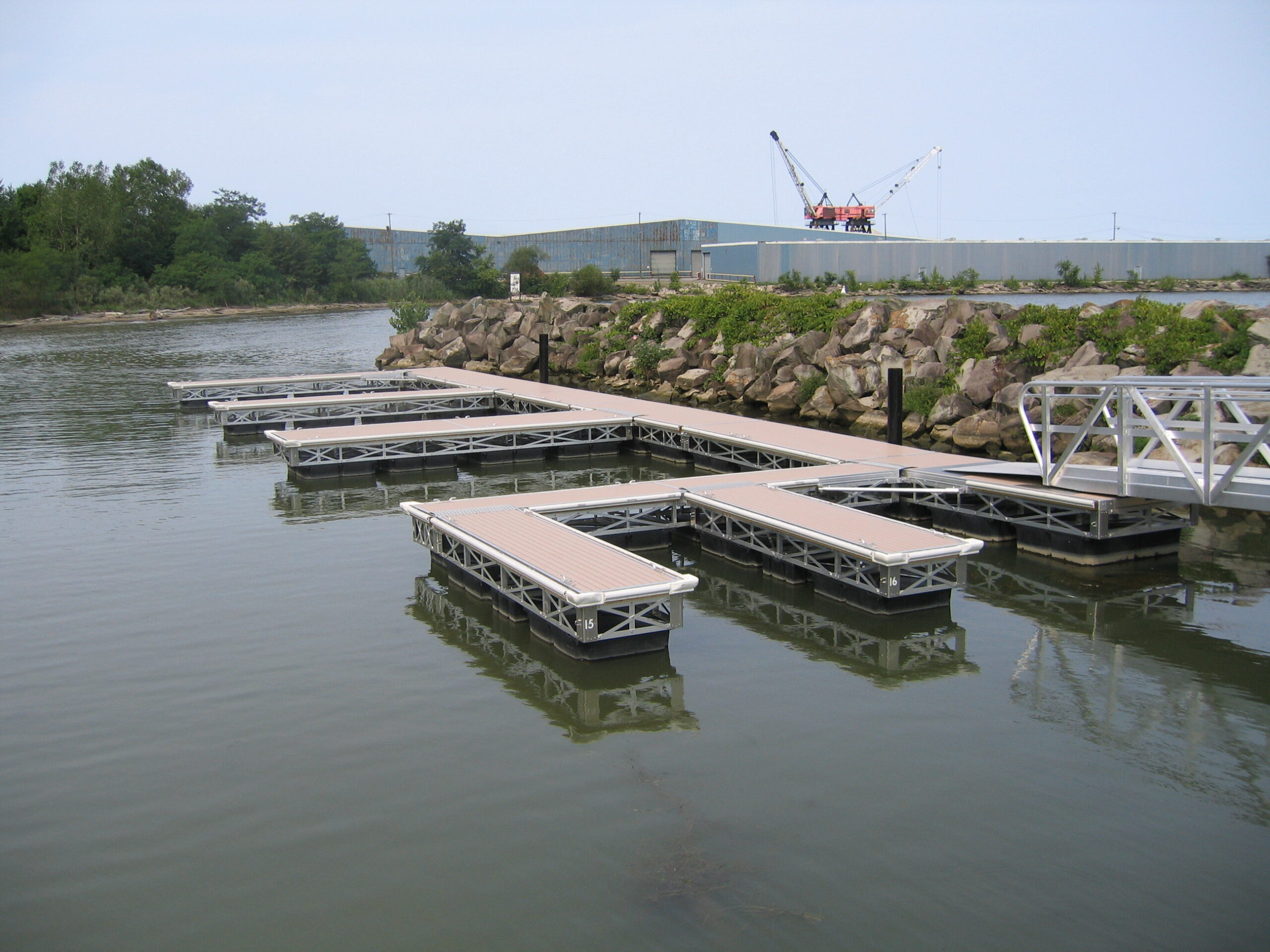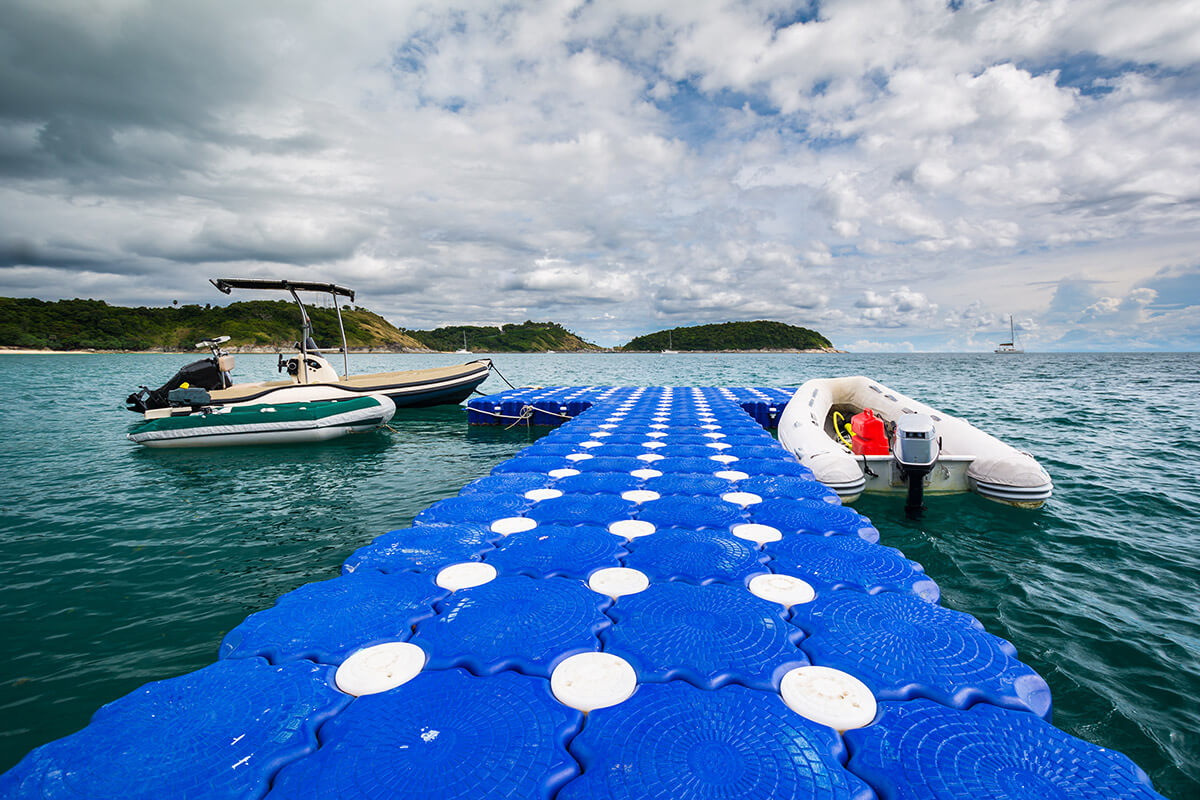Innovative Floating Docks: The Future of Waterside Gain Access To and Leisure
Innovative Floating Docks: The Future of Waterside Gain Access To and Leisure
Blog Article
Upgrade Your Waterfront With Durable Floating Docks
Upgrading your waterside with sturdy floating docks can substantially boost both functionality and aesthetic appeals, giving a versatile service for different water tasks. With an array of products readily available, including low-maintenance options and conventional wood, choosing the ideal dock can enhance your individual design and meet practical needs.
Benefits of Floating Docks
Floating docks deal a wide range of advantages that improve their appeal for numerous maritime applications. Unlike standard fixed docks, floating docks rise and loss with the tide, ensuring regular ease of access for watercrafts and watercraft no matter of environmental problems.
Furthermore, floating docks are less complicated to relocate and set up, offering adaptability for temporary or seasonal usage. Their modular style enables customization to fit details needs, whether for exclusive marinas, domestic beachfronts, or industrial applications.
In addition, floating docks develop marginal disturbance to the water setting, preserving regional ecological communities and reducing the possibility of disintegration. They additionally provide improved security and security for customers, as their buoyant nature provides a much more flexible surface than inflexible frameworks.
In addition, floating docks can facilitate a diverse variety of tasks, such as angling, swimming, and entertainment boating, making them a beneficial asset for waterfront development. Their flexibility and functionality make floating docks a recommended selection for a variety of maritime projects.
Choosing the Right Materials
Selecting appropriate materials for floating docks is essential to their long life, efficiency, and total performance. When picking products, think about aspects such as ecological exposure, maintenance requirements, and structural honesty. Common materials consist of timber, plastic, light weight aluminum, and composite choices, each offering unique advantages and drawbacks.
Wood, while aesthetically pleasing, calls for normal maintenance to avoid rot and decay. Pressure-treated wood can boost longevity, yet it might still give in to water damage over time. Plastic drifts, commonly made from high-density polyethylene, are resistant to corrosion and call for very little upkeep, making them an attractive selection for low-maintenance applications.
Aluminum is another sensible choice, known for its toughness and light-weight residential properties. It is resistant to rust and can stand up to severe weather, although it may be extra costly than other products. Composite products combine the ideal qualities of timber and plastic, using a low-maintenance and durable alternative that resembles the appearance of timber without the associated downsides.
Ultimately, the selection of material need to align with the planned use, ecological considerations, and budget restraints, guaranteeing a sturdy and practical floating dock that meets your certain demands.
Installation Refine Overview
The successful setup of a drifting dock counts on mindful preparation and implementation, ensuring that it runs efficiently in its desired setting. The very first step includes evaluating website conditions, consisting of water depth, coastline features, and prevailing weather condition patterns, which will certainly inform the dock design and anchoring system.
Adhering to the site evaluation, the following phase is to prepare the floating dock elements. This consists of visit here constructing the frame, protecting floats, and connecting any kind of essential hardware. It is essential to make sure that all links are waterproof and durable to hold up against aquatic problems.
As soon as the dock is assembled, the installation process commences with placing the dock in the water. This can involve a crane or other training tools, especially for bigger frameworks. Correct placement is essential for functionality and safety.

Upkeep Tips for Longevity
Normal maintenance is crucial for guaranteeing the longevity and ideal efficiency of a floating dock. To attain this, begin with regular inspections a minimum of twice a year, focusing on the honesty of the dock's structure, consisting of the flotation gadgets and attaching hardware. Try to find indicators of rust, damages, or wear, and address any type of concerns promptly to avoid more deterioration.
Cleaning up is one more critical aspect of maintenance. Get rid of particles, algae, and barnacles from the dock's surface to stop slippery problems and keep visual appeal. Use a soft brush and a light cleaning agent to avoid damaging the dock's materials.
Furthermore, make sure that the dock is effectively secured and safeguarded to withstand seasonal changes in water levels and climate condition. Inspect the anchoring system for stability and make modifications as needed.
Enhancing Your Outside Visual
To produce an aesthetically attractive outside area, integrating a drifting dock can substantially improve the general aesthetic of your waterside residential property. Floating docks are not only functional but can also serve as a striking focal factor that enhances the natural environments - dock company. Available in various products and designs, these docks can be tailored to match your residential or commercial property's architectural design and landscape
helpful resources
The addition of decorative elements, such as incorporated lights or trendy railings, better boosts the dock's visual allure. Think about utilizing all-natural timber surfaces, which blend seamlessly with the setting, or selecting modern products like light weight aluminum or composite decking that supply a smooth, contemporary appearance.
Tactically placing planters or seating locations on or around the dock can create welcoming areas that urge leisure and enjoyment of beachfront views. In addition, integrating shades and structures that harmonize with your landscape will certainly develop a natural visual throughout your outside location.

Verdict

Upgrading your waterside with sturdy floating docks can dramatically enhance both performance and visual appeals, supplying a versatile service for numerous water activities. Unlike conventional set docks, floating docks surge and loss with the tide, guaranteeing regular accessibility for boats and watercraft no matter of ecological problems.Selecting suitable products for floating docks is essential to their longevity, performance, and general efficiency.As soon as the dock is constructed, the installation process commences with positioning the dock in the water.In summary, floating docks offer many benefits, consisting of flexibility to water degree changes and a variety of material options.
Report this page